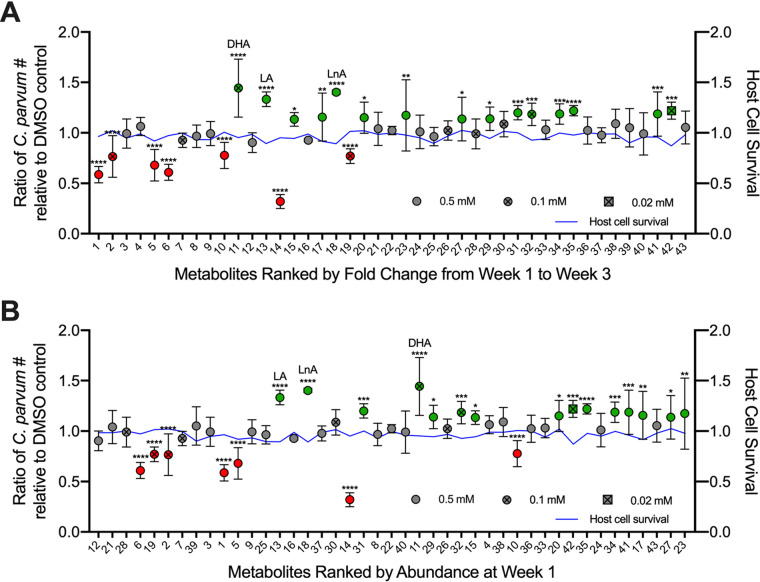FIG 3.
Effects of neonatal metabolites on Cryptosporidium growth. Average ratio of C. parvum parasites in treated samples relative to DMSO controls 24 hpi, with metabolites in decreasing order of fold decrease in abundance from mice aged 1 week to mice aged 3 weeks (A) and decreasing order of abundance in mice aged 1 week (B). Metabolites in green were found to significantly enhance growth, and metabolites in red were found to significantly inhibit growth. The three metabolites with the highest fold enhancement of growth are labeled, namely, docosahexaenoic acid (DHA), linoleic acid (LA), and linolenic acid (LnA). Data represent combined mean ± SD of three independent experiments, with 2 to 3 technical replicates per experiment. *, P ≤ 0.05; **, P ≤ 0.01; ***, P ≤ 0.001; ****, P ≤ 0.0001. The blue line indicates the mean ratio of treated host cells relative to the DMSO control.

